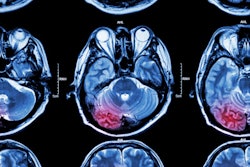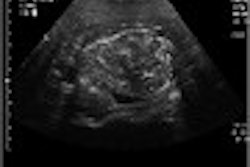A functional MRI study has shed light on the different brain processes involved in reading as children grow into adulthood. According to research published in Nature Neuroscience, kids rely on phonetic cues to decode words when they are just beginning to master the alphabet. As they mature, however, they begin to consolidate commonly occurring letter sequences and identify them as whole units.
"The primary question motivating this study was: how do neural systems responsible for reading change throughout the period of acquisition? To answer this question, we performed a cross-sectional fMRI study...using an implicit word-processing task that involves detection of a visual feature (tall letters) within both words and false font strings. Although subjects are not instructed to read words, reading occurs obligatorily...resulting in comparable brain activity," wrote Dr. Peter Turkeltaub and colleagues from Georgetown University Medical Center in Washington DC and Wake Forest University Medical Center in Winston-Salem, NC (Nature Neuroscience online, May 18, 2003).
The study population consisted of 41 subjects, ranging in age from 6 to 22 years. MR images were acquired on a 1.5-tesla scanner (Vision Magnetom, Siemens Medical Solutions, Malvern, PA) using a circularly polarized head coil with foam padding to restrict motion.
A pair of 3-D, T1-weighted images was acquired for each subject. The fMRI runs consisted of whole-brain echo-planar images. The data was then analyzed using MEDx (Sensor Systems, Sterling, VA) and the processing steps included head-motion correction, Gaussian spatial smoothing, and global intensity normalization.
The subjects were shown single, five-letter words and were asked to indicate whether the word contained an ascender (such as the letters l, f, or t). The false font strings were generated by altering the Arial font to create unfamiliar characters. Once again, the participants were asked to point out the tall characters, the authors explained.
The authors listed several results from this study. First, brain activity was compared during the feature-detection task and at baseline. They found that similar cortical and subcortical structures were engaged, including the striate and extrastriate cortices, the motor cortex, and the thalamus and cerebellum in both children and adults.
However, in subjects who were 9-years-old or younger, a posterior region of the left superior temporal cortex was engaged during word processing. Previous studies have shown that the adult brain uses other areas, including the posterior temporoparietal cortex, for word processing, the paper stated.
In terms of reading and phonological processing, the phonetic working memory in children correlated with activity in the left intraparietal sulcus, which also corresponds to working memory in adults. Other regions of the brain associated with phonetic memory were the posterior superior temporal sulcus and the ventral inferior frontal gyrus. The former is the primary area employed by children as they learn to read, while activity in the latter area increases with reading ability.
The most notable breakthrough came with regard to the developmental pattern of reading acquisition. "Reading ability correlated positively with activity in the left-hemisphere frontal and cortical areas, and negatively with activity in right-hemisphere posterior cortical areas, and negatively with activity in right-hemisphere posterior cortical areas," the authors wrote. The increase in reading ability was reflected in the left hemisphere of the brain and corresponded with developmental decreases in the right hemisphere.
"The endpoint of this developmental process is the mature network of brain regions used by literate adults to read words...our results indicate that temporoparietal cortex, including the left superior temporal sulcus, matures early in learning and continues to be involved in reading through adulthood," the authors concluded.
Although further research is in order, they suggested that their results might indicate that activity in the superior temporal sulcus could be a predictor of reading outcome, and provide a neural explanation for certain types of developmental dyslexia.
By Shalmali PalAuntMinnie.com staff writer
June 30, 2003
Related Reading
M is for MRI: Functional imaging spells out ABCs of dyslexia, April 25, 2003
MR spectroscopy reveals reduced neuronal viability in ADHD kids, March 18, 2003
Brain scans offer clues to language development, May 27, 2002
Copyright © 2003 AuntMinnie.com


.fFmgij6Hin.png?auto=compress%2Cformat&fit=crop&h=100&q=70&w=100)





.fFmgij6Hin.png?auto=compress%2Cformat&fit=crop&h=167&q=70&w=250)











